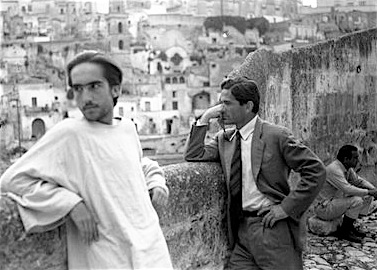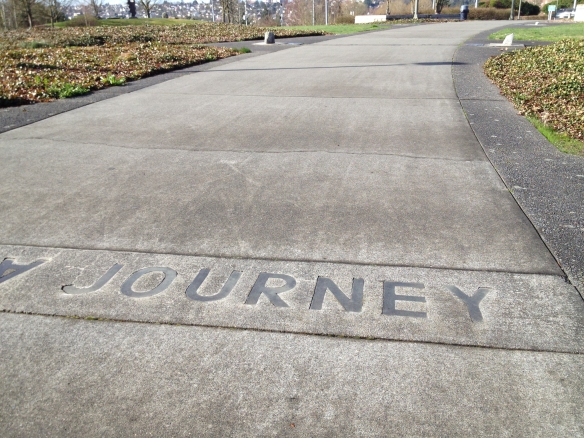We are all rehearsing parts of which we are as yet unaware (our roles). We slip into characters which we do not master (our attitudes and postures). We serve a conspiracy of which we are completely oblivious (our masks).
— Gilles Deleuze[i]
Last weekend I watched a nearly 13-hour film on the big screen at the Seattle Film Center. Jacques Rivette’s Out 1: Noli me tangere (1971) has been called the “holy grail of cinema” — made infinitely precious by the rarity of its appearance. Only in recent months have art-house screenings and a home video release[ii] made it accessible to wider veneration.
Critic B. Kite has written about this fabled film as an object of longing: “Out 1 grew in darkness, secret and seemingly made of secrets, and due to this unavailability … it joined that pantheon of broken and vanished objects [e.g., von Stroheim’s Greed or Brian Wilson’s Smile] … in which, even against our better judgment, we place some unspecified hope of a definitive experience, maybe a bit too good for the world, as indicated by the fact that they live in a half-light, next door to oblivion.”[iii]
As soon as I heard about the Seattle screening, I bought my ticket. A thirteen-hour movie? Can’t miss that! I have a penchant for immersive experiences, long-form retreats from everyday reality into alternative worlds. Among the most memorable were a 72-hour science-fiction film marathon, an all-night Epiphany liturgy in a circus tent, Peter Brook’s 11-hour staging of the Mahabharata, Masaki Koybayashi’s 10-hour film epic, The Human Condition, the 500-mile Camino de Santiago, and Christian Marclay’s 24-hour video, The Clock.
But unlike any of these, Out 1 is not so clearly shaped by a sense of plot or structure. It does not set out from a premise or question toward a place of arrival or resolution. Instead, it begins and ends in media res, adrift in a sea of occurrences and characters whose connections or meanings remain perpetually elusive.
There was no original script. Rivette, one of the most experimental of the French New Wave filmmakers, sought the same freedom as the Abstract Expressionist painters, whose process was largely free from the constraints of predetermined outcomes. His actors, provided with various situations, simply improvised their lines throughout the six weeks of shooting. Since much of the action takes place in the streets and cafes of Paris, the actors at times enlisted unsuspecting Parisians in their scenes.
The first hours feel like a documentary as two separate experimental theater companies engage in warm-up exercises, acting games and psychodrama designed to break down barriers, loosen inhibitions, and spark creativity. One exercise, bordering on hysteria, is shown in a single 45-minute shot as the hand-held camera moves restlessly among writhing, clamorous bodies. In a 13-hour film, you can do this sort of thing, and still have plenty of time left over to attend to the story.
However, if this film does have a story, it consists only of hints and speculations whose reality is always in doubt. Documentary and fiction, imagination and reality, the written and the improvised, are intertwined, inseparable, often indistinguishable.
Halfway through the film, a troubled loner named Colin, played by New Wave icon Jean-Pierre Leaud, begins to piece together fragments of Balzac and Lewis Carroll as if they are clues to a great conspiracy involving a secret society called The Thirteen, formed to subvert the social order with a radical utopian vision. But it may be that The Thirteen is no more than a long-dormant idea some of the other characters once dreamed but never enacted. When told that the object of his obsessive quest may be a hoax, Colin replies, “But that would mean that the magical, mysterious world I’ve been living in is nothing but illusion. And that,” he insists, “is impossible!”
To live in a world without underlying connections or purposeful ends is a bleak, even terrifying prospect, as Thomas Pynchon notes in Gravity’s Rainbow:
If there is something comforting-religious, if you want — about paranoia, there is still also anti-paranoia, where nothing is connected to anything, a condition not many of us can bear for long.[iv]
Is there a middle way between the fictions of paranoia and the despair of anti-paranoia? Colin’s quest proves a dead end: there is nothing to find. He stops searching for answers and resumes his original persona as a (pretended) deaf-mute passing out envelopes at sidewalk cafes. Inside the envelopes are “messages of destiny” — pages ripped at random from paperback novels.
The two theater groups, meanwhile, are pursuing their own path toward meaning as they each grapple with a tragedy from Aeschylus. One of these, Prometheus Bound, provides a text perfectly descriptive of the obstacles to coherence in our personal and social narratives:
…they had eyes, but sight was meaningless;
Heard sounds but could not listen; all their length of life
They passed like shapes in dreams, confused and purposeless.
In stealing fire from Zeus, Prometheus became humanity’s great benefactor, the bringer of light, technology and civilization. He would also be credited with securing us meaning, purpose, and future. But he paid the highest price for this gift. Chained to a rock in a ritual of perpetual sacrifice, he would be devoured and regenerated daily. His sacrificial suffering on behalf of humanity has drawn comparisons with Christ. And while Noli me tangere (“Touch me not”), may have been no more than Rivette’s joke about his film being something that few would ever see, its direct quote of the risen Savior (John 20:17) may be an intended link between Prometheus and Christ.
At the end of the film, Thomas (Michael Lonsdale), who assumes the role of Prometheus in his troupe’s improvisations on Aeschylus, lies forsaken on a beach, arms outspread in a crucifixion pose. After a time, he gets up and walks along the shore toward the rising sun. But this seems only a parody of resurrection. We sense no renewal, no passage to a place of transformation and new life. All the heaven-storming, psyche-delving exertions of the Aeschylus project have led precisely nowhere. Thomas has not been transposed into a higher key. He remains as “confused and purposeless” as ever.
But as we take our leave of him, after twelve hours and forty-one minutes, Thomas is still moving, not yet done, like the protagonist in Samuel Beckett’s The Unnamable: “You must go on. I can’t go on. I’ll go on.”
As the intrepid audience of eighteen men and four women exited the theater sometime after midnight, we were awarded with a button for our labors. I wore it proudly on the 2 a.m. ferry home.
The film ended as it began: in media res. It had not delivered us to a resting place of resolution or catharsis, but it would continue to haunt me in the days that followed. As the many online essays about the film attest, recovering from the experience may take some time. It’s not just that cinema’s magic carpet whisked me off to the Paris of 1970 for thirteen hours, or that the actors were infinitely watchable, or that Rivette’s audacious play with form was deeply fascinating.
What moved me most about Out 1 was its immense sympathy for the human condition as something more to be lived than solved. Comedy and tragedy, laughter and tears, are equally at home in Rivette’s film, as the actors rehearse “the parts of which we are as yet unaware” and “slip into characters which we do not master.”
Related post: Jacques Rivette’s “Around a Small Mountain”
[i] Gilles Deleuze, Cahiers du Cinema, no. 416, February 1989. Reprinted in Two Regimes of Madness (MIT Press, 2006): p. 355-8, and available online at http://www.jacques-rivette.com
[ii] Available from Carlotta Films
[iii] B. Kite, “Jacques Rivette and the Other Place,” Cinema Scope, no. 30 (Spring 2007), p. 12. The article, along with many other essays about the film, may be found at http://www.jacques-rivette.com
[iv] Thomas Pynchon, Gravity’s Rainbow, p. 434













